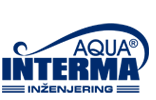Algae in natural waters cause the appearance of a bad smell and taste. They are also changing the organoleptic properties of water and disrupt the operation of the cleaning devices. The survival and growth of algae in natural waters depends on the degree of contamination and the presence of nutrients. Metabolic products of algae and decomposition of dead organisms affect the change in water quality in an unfavorable sense.
Recently, the reproduction of algae is controlled by ultrasound. This is achieved by using of ultrasound generators, that are small, easy to install and have low power consumption. A new approach in controlling the blue-green algae reproduction, using ultrasound generators, allows their effective removal from the water.
Ultrasound destroys the structure of algae in a very short time. Applied at the beginning of the water purification process, it prevents the emergence of problems in later stages of processing, such as sedimentation and filtration, reduces the consumption of chemicals and prevents the unpleasant taste and odor in water. Besides all mentioned, this method is, compared with the conventional, more efficient, cheaper and simpler.
Great effect in preventing of algae reproduction at the beginning of treatment, prolonged filtration cycle and prevention of algae penetration in the water supply network (which contributes to water quality in the distribution system), are only some advantages of this system. In combination with coagulation, flocculation and disinfection substances better results can be achieved with lower consumption of chemicals, making the use of ultrasound justifiable.
Control algae in three simple steps
Algae control does not have to be complicated. LG Sonic is a simple system to control algae.

- Generate ultrasound: Sound pulses are being generated within the power TMbox. Thanks to the Dc-Mf technology, used only by the LG Sonic, the power box generates several different frequencies simultaneously and sends them to the transducer.
- Transmit ultrasound: The transducer transmits these sound pulses into the water with a very high sound pressure (dB). The sound waves have different frequencies but all lie in the ultrasonic range and are thus inaudible.
- Damage algae: The high pressure ultrasound emitted by the LG Sonic targets many different algal structures. Components of algae cells, within the long range of LG Sonic, oscillate on the sound frequencies. This leads to tearing of different cell organelles such as the vacuole’s tonoplast, cell wall or membrane and the gas vesicles of blue-green algae. Because many frequencies are used simultaneously different species of algae can be controlled on an efficient manner within a very short time span.
Application fields:
- plants for potable and waste water treatment
- sedimentation tanks
- cooling towers
- ponds
- lakes
- outdoor swimming pools
- irrigation systems












